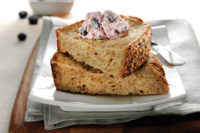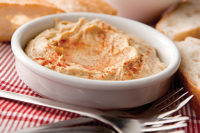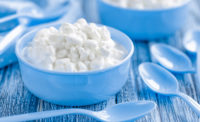“I recently read about a study conducted by Packaged Facts that showed that 63% of U.S. grocery shoppers purchased a food or beverage in the past year to address one or more specific health-and-wellness conditions or concerns.”
Tops among them are cholesterol management and digestive health. Raban has seen interest in fiber and protein tick up, as well.
“General awareness of omega-3 fatty acids is growing, and formulators now have plenty of delivery options outside of fish oil,” Raban said. For example, vegetarian and vegan product formulators and manufacturers can use chia or flax seeds as alternatives to marine-based omega-3s.
The audience for these ingredients runs the gamut.
“Any consumer looking to improve overall nutrition is part of the target, but baby boomers are a huge segment. Also, with millennials gaining more wealth, they will continue to expect high-quality and fascinating functional ingredients that provide nutrition and add excitement to a product,” Raban said.
Courtney Kingery, marketing and customer development manager at ADM North American Oilseeds, an ingredient supplier in Decatur, Ill., said her company surveyed 30 members at a local gym. Based on the responses, the company identified a group of “dedicated athletes,” primarily age 45 and older who visit the gym more than five times a week on average. The athletes are motivated by weight maintenance, staying active, staying healthy and staying young, Kingery said.
“This group looks to their food choices to support those goals. Products and ingredients that promote a balanced approach are in high demand.”
Perfect match
But it takes a certain chemistry — literally and figuratively — to make a happy marriage between a functional ingredient and a dairy application, especially to today’s hyper-connected shoppers.
“Now that consumers are spending more time researching the foods they buy, functional ingredients need to do more than just sound great,” Raban said. Namely, the ingredients need to differentiate a product on two fronts — nutritionally and from a marketing perspective.
And they need to make sense. For even though manufacturers can muscle a healthy halo onto a “junk” food, such fortified products frequently incur consumer — to say nothing of regulatory — skepticism. And that helps explain why dairy offers such an intuitive platform for functional benefits.
Kingery calls dairy the ideal vehicle for functional ingredients for two reasons. First, dairy-based products have an inherent halo of health, she said. Buffing the shine on that halo with functional ingredients is something consumers “get.” Second, the typical shorter shelf life and cold storage of dairy are ideal environments for many functional ingredients.
Just consider that good-for-you classic, yogurt. As Raban said, “Yogurt, and Greek yogurt more recently, are seen as having a long past of healthfulness. And now that consumers are increasingly concerned with nutritional value, formulators and manufacturers can expand on yogurt’s wholesomeness with other functional ingredients. For example, those who include fruit on the bottom could incorporate chia seeds into the fruit prep not only to differentiate the product but, more importantly, to add some nutritional benefits like omega-3s and fiber, as well.”










